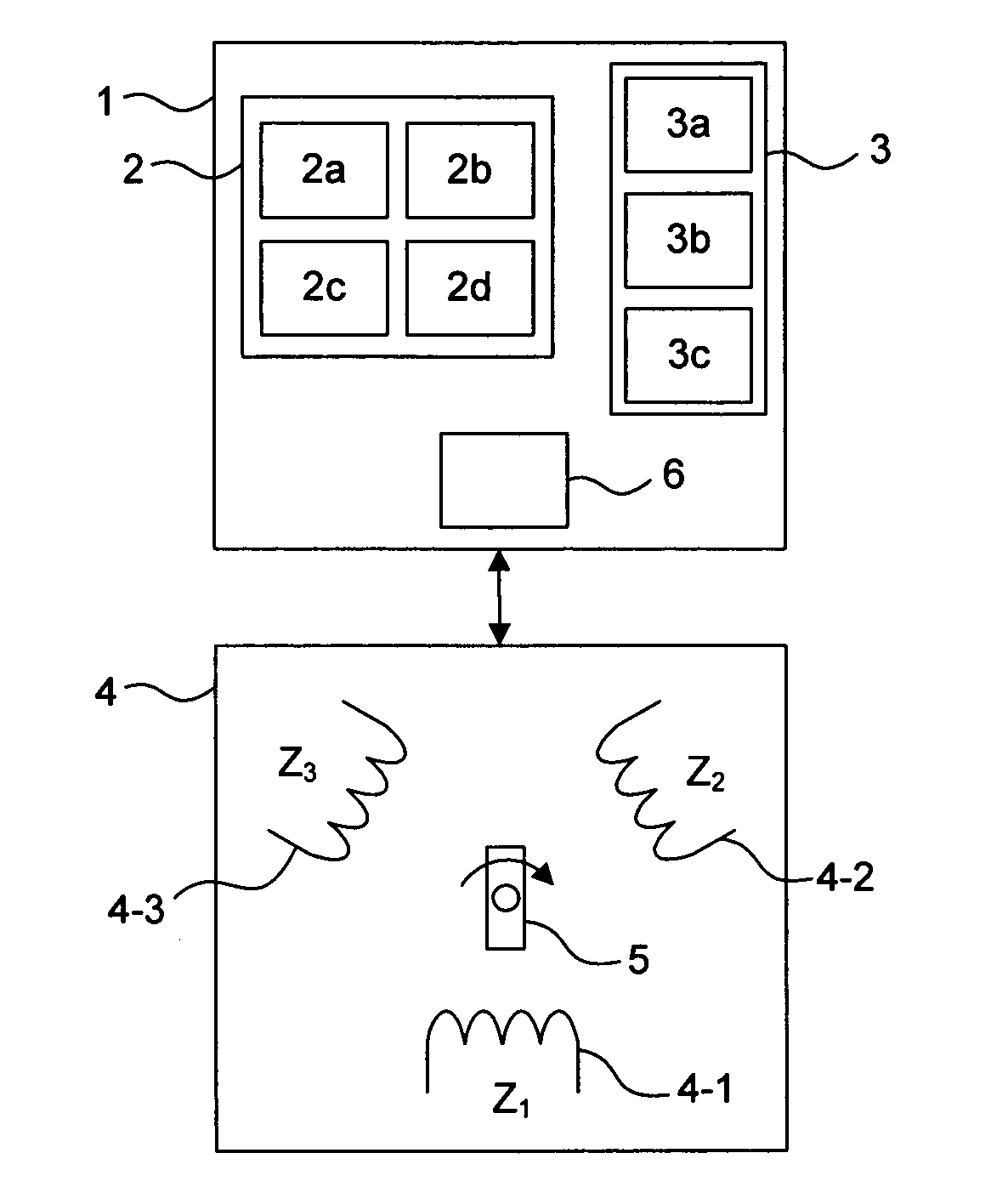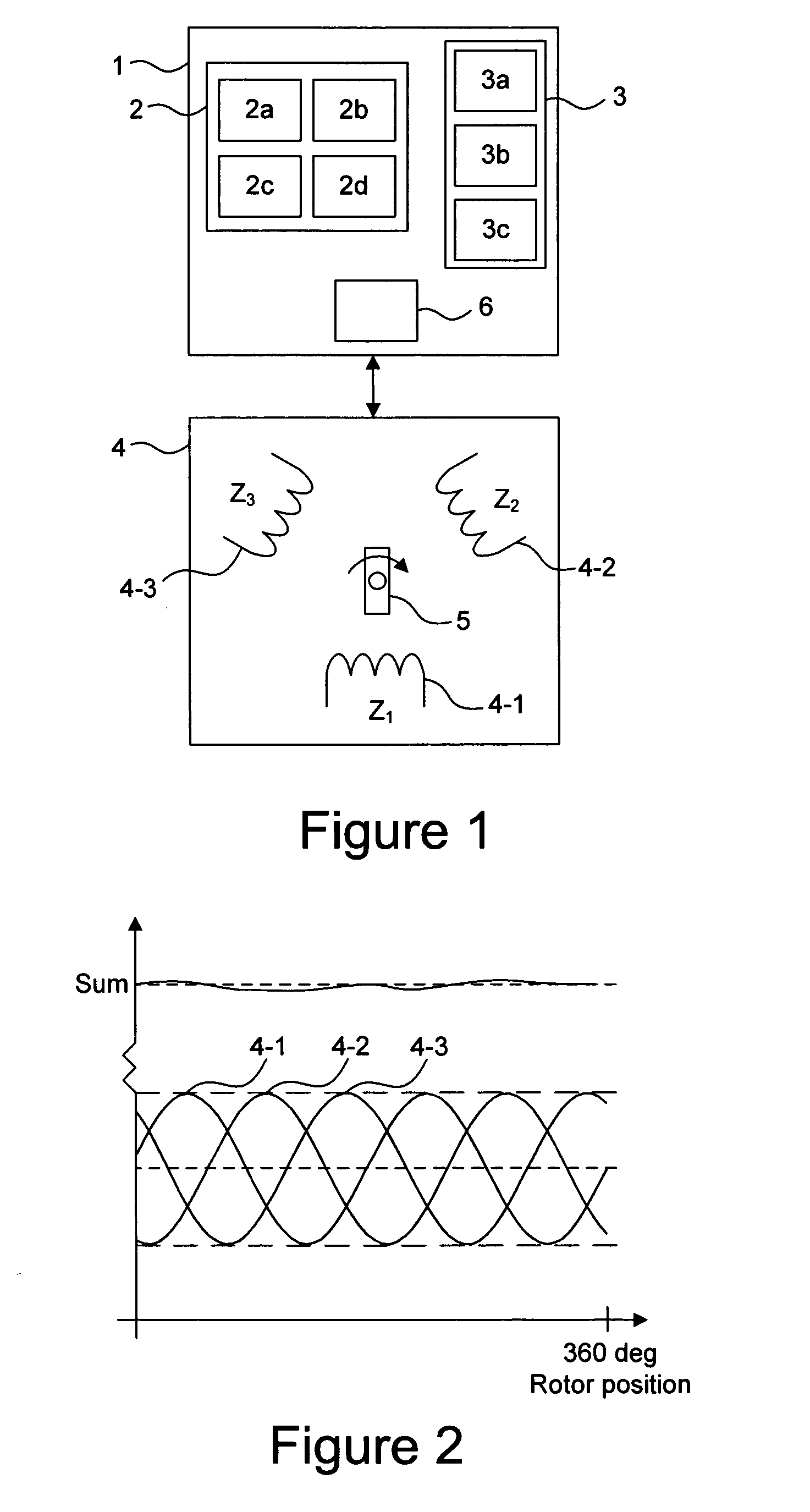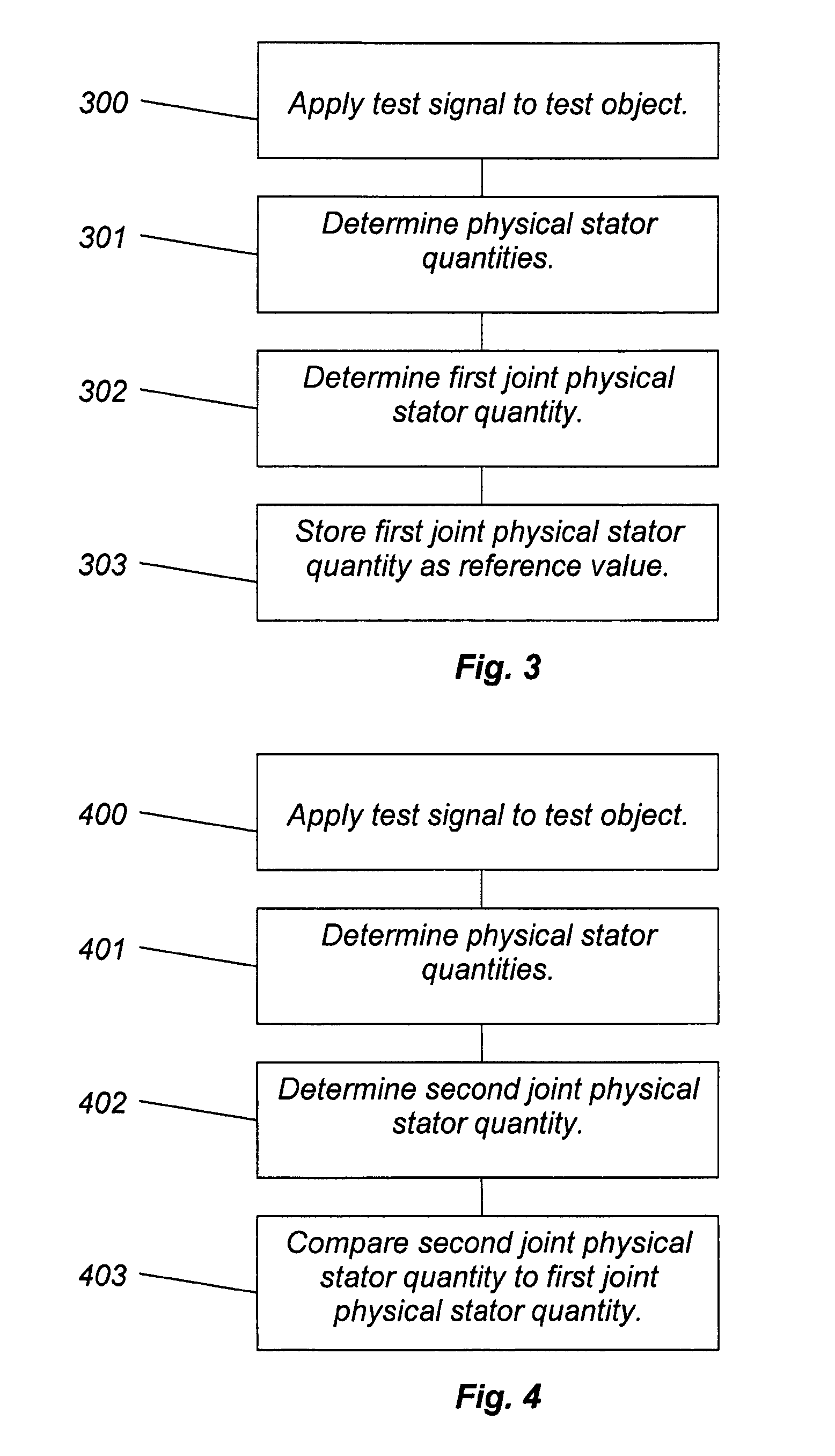Method and apparatus for off-line testing of multi-phase aternating current machines
a multi-phase alternating current machine and test method technology, applied in the direction of dynamo-electric machine testing, resistance/reactance/impedence, instruments, etc., can solve the problems of inability to measure the electric motor, excessive resistance, excessive air cavity, etc., to reduce the time required for testing the machine, and fast and reliable determination
- Summary
- Abstract
- Description
- Claims
- Application Information
AI Technical Summary
Benefits of technology
Problems solved by technology
Method used
Image
Examples
Embodiment Construction
)
[0050]A system in which the present invention may be applied will first be described with reference to FIG. 1.
[0051]Referring to the block diagram in FIG. 1, a preferred embodiment of a measuring device 1 according to the present invention will be described. The measuring device 1 comprises a control unit 2, which preferably comprises: a CPU 2a, a program memory 2b, a data memory 2c, and an A / D converter 2d. The measuring device further comprises a measuring circuit 6. The measuring device 1 may additionally comprise a screen, which is connected to the control unit 2.
[0052]The measuring device 1 comprises a waveform generator 3 connected to the control unit 2, which preferably comprises: a D / A converter 3a, a reconstruction filter 3b and a power amplifier 3c.
[0053]The measuring device 1 comprises inputs for connection to a test object 4.
[0054]The test object 4 is a multi-phase alternating current machine. The machine may be a two-phase machine, a three-phase machine, a six-phase o...
PUM
 Login to View More
Login to View More Abstract
Description
Claims
Application Information
 Login to View More
Login to View More - R&D
- Intellectual Property
- Life Sciences
- Materials
- Tech Scout
- Unparalleled Data Quality
- Higher Quality Content
- 60% Fewer Hallucinations
Browse by: Latest US Patents, China's latest patents, Technical Efficacy Thesaurus, Application Domain, Technology Topic, Popular Technical Reports.
© 2025 PatSnap. All rights reserved.Legal|Privacy policy|Modern Slavery Act Transparency Statement|Sitemap|About US| Contact US: help@patsnap.com



